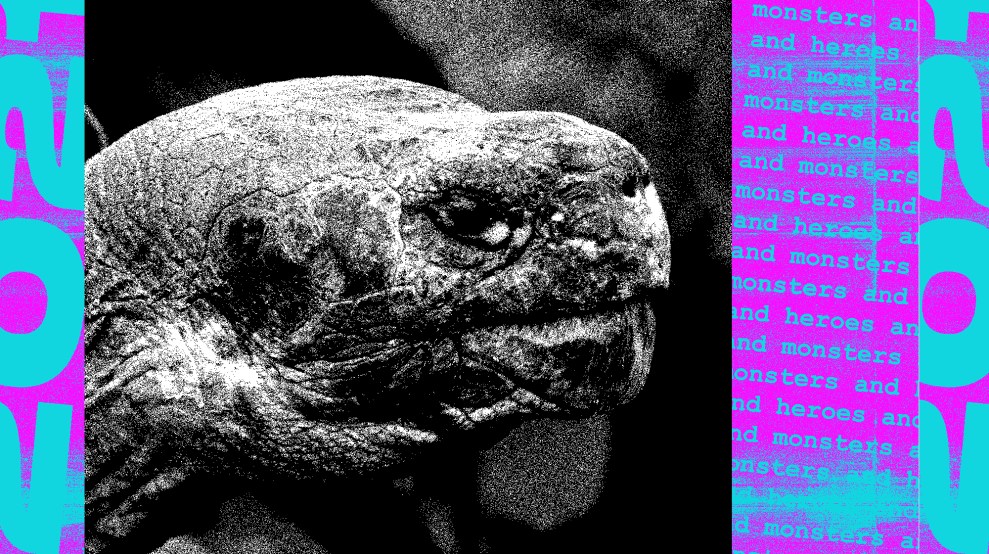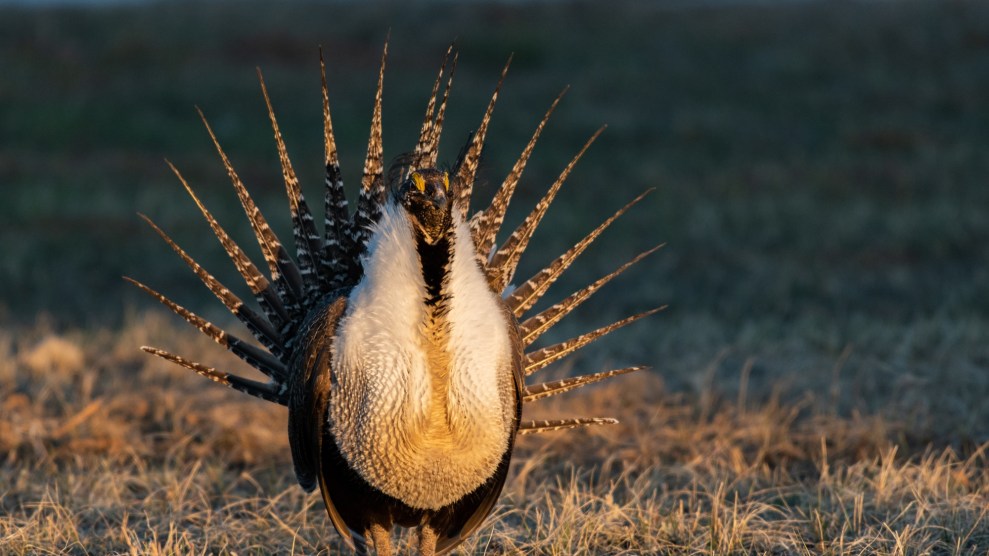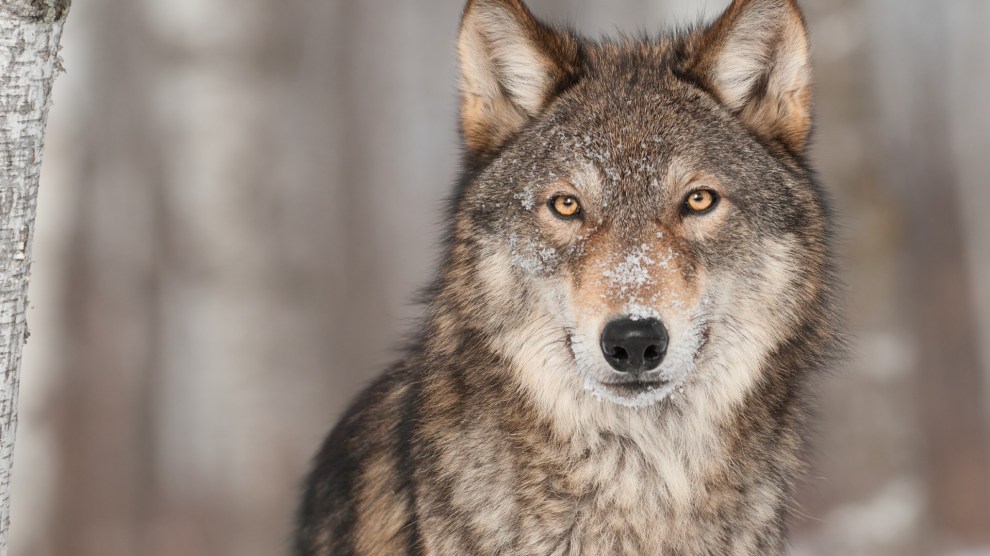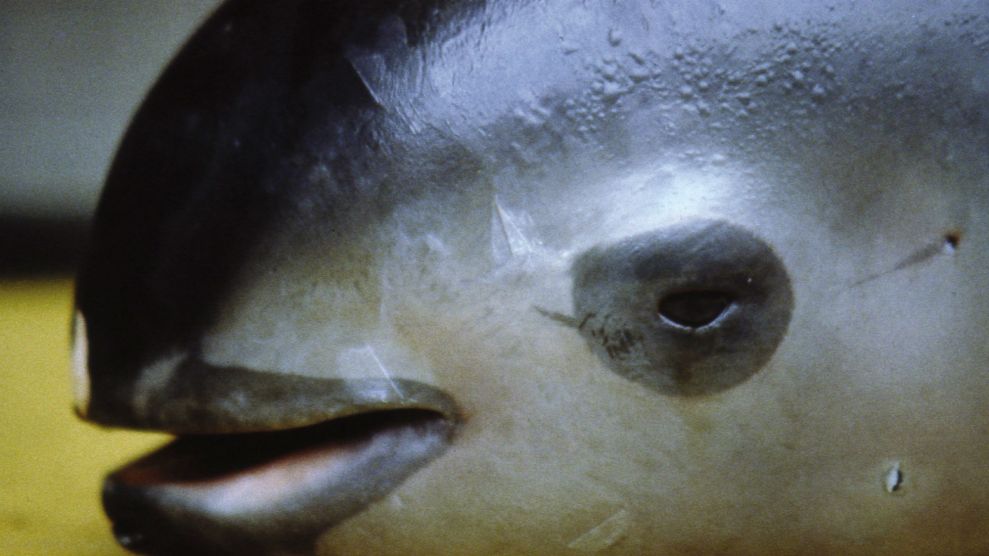
Mother Jones illustration; Magdalena Kula Manchee/Unsplash
As usual, the staff of Mother Jones is rounding up the heroes and monsters of the past year. Find all of 2021’s heroes and monsters here.
There is, quite possibly, no organism as friendless as Fernanda the giant tortoise. Back in 2019, scientists spotted her on Fernandina Island, a volcanic, desolate landmass in the Galapagos. At the time, they suspected she might be a member of Chelonoidis phantasticus, a species of giant tortoise native to the island that had long been thought extinct. In fact, the last time anyone had seen a Fernandina giant tortoise was 1906. When that individual died, scientists assumed, the species died with it.
To verify her lineage, a team at Yale analyzed a sample of her blood. In May, they finally shared the exciting news: Fernanda was, in fact, closely related to the tortoise seen in 1906, making her a card-carrying member of the Chelonoidis phantasticus species. And, at about 100 years old—middle-aged in tortoise years—Fernanda could, in theory, produce offspring. All she needed was a mate.
Suddenly, Fernanda went from assumed-to-be-dead to the world’s most eligible tortoise. With the fate of this rare species hinging on Fernanda’s ability to procreate, conservationists have launched an “urgent expedition” to find her a male companion. “Rediscovering this lost species may have occurred just in the nick of time to save it,” said James Gibbs, a tortoise expert at the State University of New York, in a press release. “We now urgently need to complete the search of the island to find other tortoises.”
Tortoise mating efforts have had mixed success. One giant tortoise named Diego, a member of a different species from the Galapagos’ Española Island, was brought from the San Diego Zoo to a breeding facility in the Galapagos in 1976. Shortly after, it became clear he was blessed with a remarkable sex drive: Over four decades, the facility expanded its population of tortoises from 15 individuals to about 2,000. According to genetic tests, Diego fathered about 40 percent of the group. He retired, a legend, in 2019.
But then, there was Lonesome George. Like Fernanda, Lonesome George’s species, Chelonoidis abingdoni, also known as the Pinta tortoise, was thought to be extinct. When he was discovered in 1971, researchers looked far and wide for a female Pinta tortoise, to no avail. And although Lonesome George shared a corral with female tortoises of similar species, he produced no offspring, and died in 2012.
With Fernanda, conservationists are hoping to avoid another Lonesome George situation. And they have reason to be optimistic: The team that discovered Fernanda also found footprints and poop belonging to at least two other tortoises on Fernandina Island. The search for more tortoises on the island is ongoing, Gibbs told me in an email, with an expedition “to explore the remaining unsearched areas” planned in early 2022.
Whether or not Fernanda ever made contact with those tortoises is unclear. It’s possible she had been wandering her 245-square-mile island with no real companions to speak of (as far as we know), for more than a century. And now she has been tasked with saving her species. If that doesn’t scream hero, I don’t know what does.
















